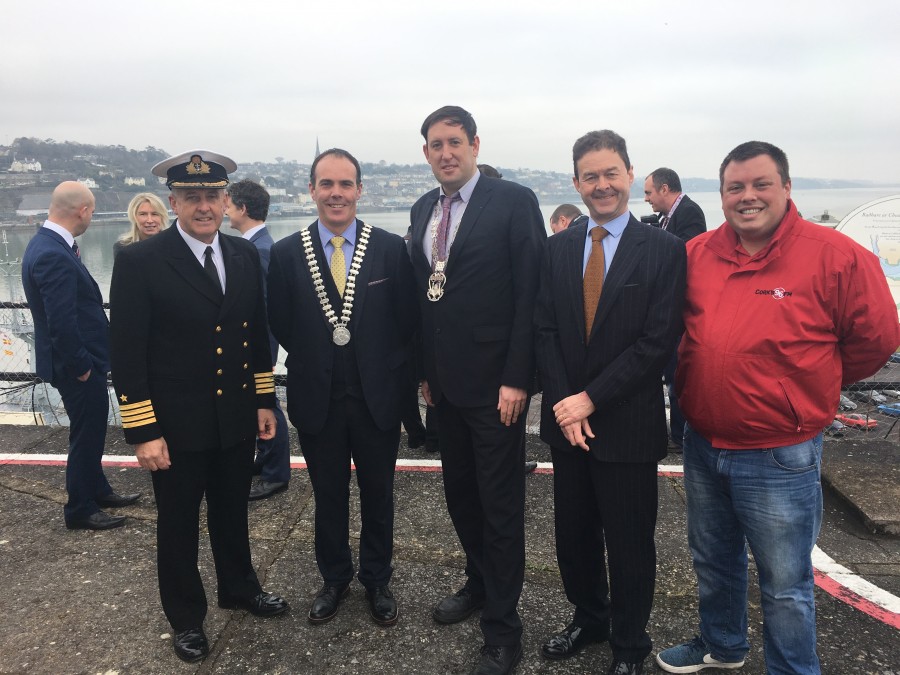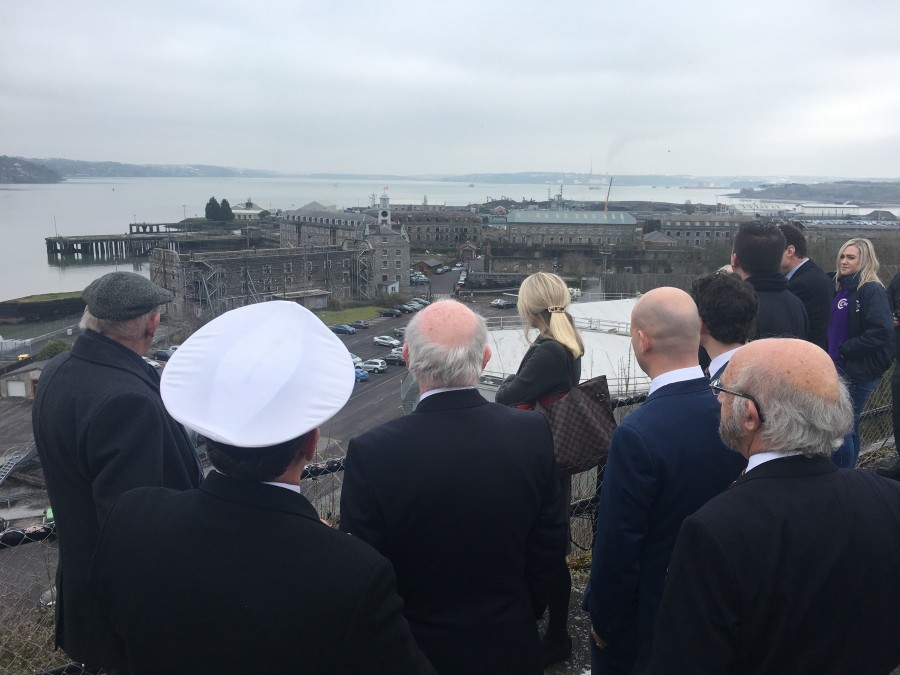Speech Notes, Deputising for the Lord Mayor,
Cllr Kieran McCarthy
The Edge of Memory
The Acupuncture of Landscape:
On behalf of the Lord Mayor, many thanks for the invitation to come and chat to you this afternoon for the launch of Volvo Week.
In the last few days our localities looked different – the familiar became the foreign – for many of us our homes, our neighbourhoods, our locales, our city, our town, our region felt different. It’s as if someone flipped a switch and turned the focus on our view to a different one – we admired different contours, we could not drive, we walked differently, we were excited, we remembered past times, we worried about missed work deadlines – in a sense we were stranded physically and perhaps mentally in a different looking world. Our surrounding snow-laiden landscape carved and sped up the creation of new perceptions.
But on any given day the landscape has the power to stop, impress, make one question, create an openness, wonder, dream, remember, be disturbed, explore and not forget – a whole series of emotions – acupuncture pins of an emotional sorts, which evolve who we are, our place in our world, our sense of place, our story, our culture, our identity.
The Land of Cork Harbour:
If landscape has these emotional acupunctural powers, a landscape such as Cork Harbour, of which we are just in one of its most historic quadrants, is a rich haven to try to understand our sense of place, our story, our culture, our identity.
Being the setting for Volvo Week, the second largest natural harbour in the world brings a focus and energy with which Cork Harbour has always been open to. The ebb and flow of the tide through the ages has carved a unique landscape of cliffs, sand and gravel beaches exposing an underlining geology of limestone and sandstone. Invigorating this landscape are a multitude of archaeological monuments inscribing it from different ages.
Colourful villages provide different textures and cultural landscapes in a sort of cul-de-sac environment where roads end at harbours, at car parks near coastal cliff faces, and quaysides – where signs warn the visitor of the edge. The villages are scattered around the edges of the harbour, each with their own unique history, all connect and add in someway to the greatness of this harbour.
In many areas, one can get the feeling you are at the ‘edge of memory’. There are the ruins of old structures, which the tide erodes away at. One can sense that a memory is about to physically and culturally get carried away by the sea and the fluidity of places-making shifts again. And that’s just the land part. Not everyone gets to view the harbour in a more holistic way from the water.
The Watery Landscape:
Through boating and sailing, we get to feel the harbour’s watery landscape – a more shift-shaping entity with a wide ranging juxtaposition of qualities – calm to rough, clear to foggy, playful light to darkness, dreamlike to fantasy – where stories almost stray between the ripples of the deep waters beyond – that if you stare long enough your mind creates its own scenes of place or re-imagines one’s life from days of yore.
The power of place and memory are ever present – the setting, the water, the past, the present, all colliding, at any one time knocking our sense of place.
And with all these emotional acupuncture pins- this box of ideas about place and memory, it is perhaps that today we return here to Haulbowline – to the first home of the Royal Cork Yacht Club (RCYC), which has successfully over near three hundred years played with the land and water element of the harbour, and defines joined up thinking on the holistic cultural use of the harbour.
The Historic Royal Cork Yacht Club:
The Royal Cork Yacht Club traces its origins back to 1720, a time when the City of Cork was taking down the limitations of being a walled town, and a time when iconic structures such as St Anne’s Shandon was being constructed in 1722 as well as aspects such as the Mardyke being laid out in 1719. Its story is richly laid out in Alicia’s St Ledger’s thick book of histories, illustrations and pictures. It began with the establishment, by six worthies of the time, of the Water Club of the Harbour of Cork, headquartered in the castle of Haulbowline Island – headed up by the 24-year-old William O’Brien, the 4th Earl of Inchiquin, and probably the first Admiral of the club. Membership was limited to 25 and strict protocol governed all the club’s activities, both afloat and ashore.
Racing proper did not begin until 1787 and, in the years prior to that, the club’s members contented themselves with sailing in a rather leisurely fashion around the harbour once a month from April to September on the spring tide.
Fast forward almost a hundred years from 1720 to circa 1813, a barracks to accommodate three officers and sixty men, two storehouses, a gun carriage yard, smithy and carpenters’ workshop and other installations were constructed.
Circa 1820, on the naval side of the island (i.e. the eastern side), a large victualling yard containing six large storehouses, living quarters for the supply staff and medical officers, houses for the Chief Surgeon, the coopers and other workshops were erected. The island was extended by 4.5 acres of reclaimed land in order to construct the flat wharfage area. The building contractor was Mrs Deane of Cork, who shortly afterwards was involved in building Cork City Gaol.
All followed by the creation of Rocky Island as an ammunition store and Spike Island as a convict prison.
Towards EU Maritime Day:
These stories and a multitude of others such as in Camden Fort Meagher, we are telling a lot more. Focus in the harbour in the last few years has been more and more on the power of the story of the harbour. That such a story is a jewel that we should try to understand and promote more. The RCYC is central to the story. Our harbour heritage sites capture a piece of life. And both Cork City Council and Cork County Council are parts of the pieces in helping that process. Cork City Council looks forward to hosting EU Maritime Day in 2020.
Volvo Week also creates new ways of seeing places, create ways of expressing ideas about the idea of place and create new ways of place making.
Perhaps for us the participant, the week presents a set of lenses or tools perhaps to decode, discover, recognise, reveal, synthesise, communicate, move forward and explore our cultural heritage, the environment, society and the very essence of identity-making.
Today’s Society also needs all of those traits and emotional acupunctural pins in abundance.
I wish everyone involved in this week well; I would like to thank Volvo and all the sponsors, the RCYC, the people of the harbour region well in hosting this enormous event.
I look forward to engaging with different aspects of the week and I look forward to the commemorative events of 2020.
Go raibh maith agaibh.

